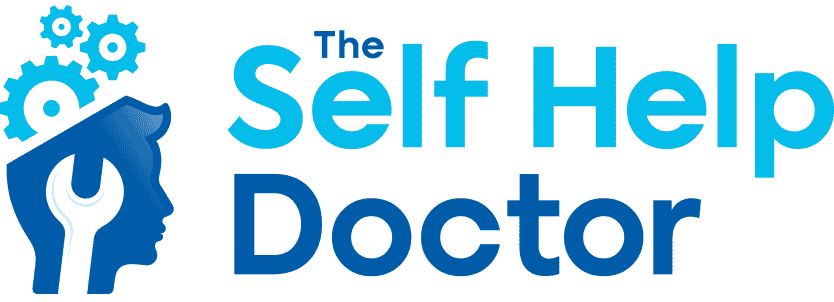Empower Yourself: Overcoming Trichotillomania with CBT Techniques

Living with Trichotillomania, a hair pulling disorder, can sometimes feel overwhelming, but there’s definitely hope for regaining control over your mental health. Cognitive Behavioral Therapy offers helpful techniques to manage and tackle this condition, guiding you through emotional challenges. As someone with years of experience as a psychologist and mentor, I deeply understand the struggles with Body Focused Repetitive Behaviors (BFRB) such as compulsive hair pulling, and it’s my privilege to support you on this empowering journey. Start building your emotional resilience and regain that confidence you deserve.
Understanding Trichotillomania
The Hair Pulling Disorder
Trichotillomania involves a strong urge to pull out one’s hair, which can lead to noticeable hair loss and distress. Often misunderstood, this disorder is sometimes tied to Body Focused Repetitive Behaviors (BFRB), like skin picking or nail biting. It affects roughly 1% to 2% of the population in varying degrees, according to Cleveland Clinic.
The roots of this disorder appear to be a blend of genetic, environmental, and neurological factors. Many people find themselves trapped in a cycle where pulling hair offers short-lived relief from stress or anxiety.
Understanding this disorder is your first step toward managing it. Resources such as the ABCT give insightful details, aiding individuals in recognizing symptoms and seeking treatment.
Emotional Challenges Faced
Living with trichotillomania can stir up a world of emotions. Those affected often deal with guilt, shame, and embarrassment, which can add to stress and anxiety. This emotional storm can lead to steering clear of situations where hair pulling might be seen.
Struggles with self-esteem due to noticeable hair pulling can also occur. Feeling different or fearing judgment can be sources of emotional pain. Recognizing these feelings and understanding their impact is crucial.
Support from loved ones and mental health professionals can be a game-changer. Honest conversations can cut through feelings of isolation, paving the way for emotional healing.
Impact on Mental Health
Trichotillomania can deeply affect mental health. Many experience depression and anxiety because they feel they can’t control the hair pulling. This condition might also bring on obsessive-compulsive symptoms, as the urge to pull becomes too intense.
As NCBI notes, awareness is crucial. Therapy can address deep-rooted psychological issues and help develop coping strategies.
Long-term effects may include chronic stress and linked health issues. Early intervention and steady support can make significant differences in mental health outcomes.
Cognitive Behavioral Therapy Techniques
Managing Triggers with CBT
CBT helps pinpoint and handle what triggers hair pulling. Noticing these triggers is a big first step:
-
Identify Situations: Keep a journal to jot down situations, places, or emotions that bring on stress or hair pulling.
-
Analyze Patterns: Spot behavioral or emotional patterns.
-
Develop Alternatives: Partner with a therapist to figure out new responses to these triggers.
These proactive approaches let you take back control, diminishing the urge to pull hair. Regular practice can bring long-lasting changes.
Emotional Management Strategies
Emotional management is key in CBT for trichotillomania. Building emotional strength includes:
-
Cognitive Restructuring: Challenge negative thoughts to alter unproductive thinking patterns.
-
Enhancing Emotional Tolerance: Increase your capacity to handle emotions effectively without feeling overwhelmed.
-
Learning Adaptive Behaviors to Relieve Tension: Discover new methods to alleviate stress and tension constructively, before they build up and lead to automatic behaviors such as hair pulling.
These strategies help you gain control over emotional responses, reducing hair-pulling impulses. Regular use of these techniques can lift overall emotional wellness.
Self-Guided Mental Wellness
Self-guided mental wellness tools are a great way to complement therapy or even serve as an alternative. They empower you to be actively involved in your treatment, boosting awareness and responsibility.
-
Journals and Apps: Use digital tools to track progress and check in with emotions.
-
Worksheets: Dive into CBT worksheets crafted for trichotillomania to reinforce what you’re learning.
-
Support Groups: Connect in online forums or local groups to share experiences and tips.
-
Self-Help Courses: Leverage courses like the Healthy Mindset Toolkit designed to teach practical techniques for overcoming hair-pulling behaviors.
These resources let you keep making strides outside therapy sessions, offering a sense of accomplishment and independence.
Online Therapy vs. Self Help Resources
Learn CBT techniques from an online therapist, or consider my self-help course as a way to independently handle trichotillomania, offering guidance and support as an excellent alternative to therapy.
Online Therapy Options
Online therapy offers flexible support for those managing trichotillomania. Virtual platforms connect individuals with licensed therapists, providing personalized therapy sessions from the comfort of home.
Benefits include:
- Convenience: Access therapy sessions around your schedule.
- Variety: Choose from a range of therapists and specialties.
- Privacy: Engage in therapy discreetly and securely.
These platforms make mental health resources more accessible, ensuring that those in need can find the support they require.
‘Healthy Mindset Toolkit’ Overview
The ‘Healthy Mindset Toolkit’ maps out a comprehensive approach to handling trichotillomania with CBT techniques. This 12-week self-help course guides you to healthier habits and stronger emotional resilience.
Key features include:
- Structured Modules: Walk-through guides on CBT strategies.
- Interactive Content: Engage with videos and Q&A to enhance learning.
- Professional Guidance: Developed by me, Dr. Ohad, ensuring quality and expertise.
This toolkit provides a practical pathway, supporting you on your mental wellness journey.
Free Mini-Course Benefits 😊
My free Unhealthy Habits mini-course introduces you to the basics of managing trichotillomania with CBT, acting as the first step to effectively understanding and tackling the disorder.
Benefits of the mini-course include:
- Introduction to CBT: Grasp foundational techniques to manage triggers.
- Accessible Content: Engage with content on your own time.
- Confidence Building: Equip yourself to start addressing hair pulling behaviors.
This free resource is a great starting point for anyone looking to take charge of their mental health and build confidence in managing trichotillomania. 😊
Check out the Unhealthy Habits mini-course here.




